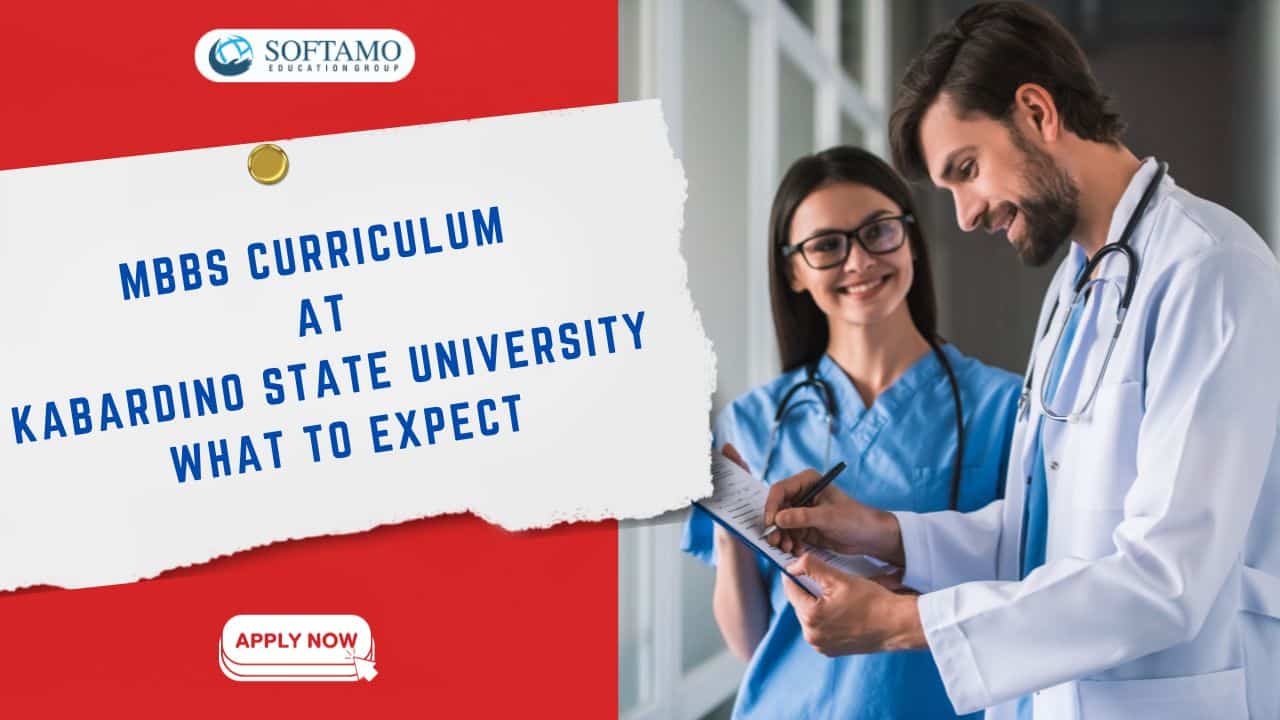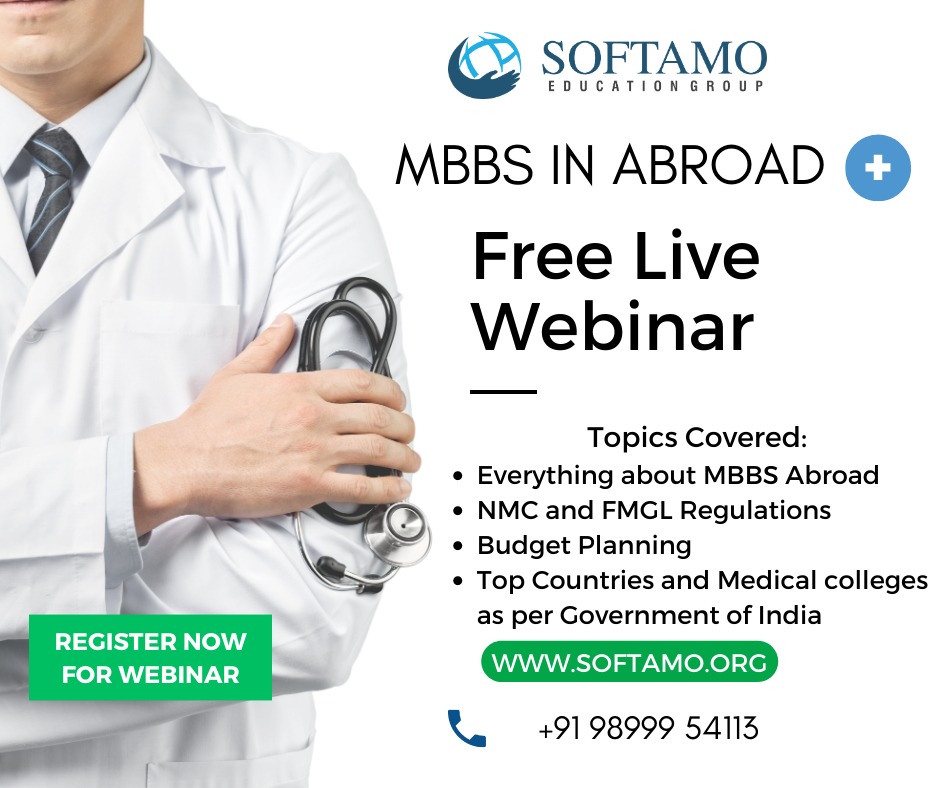When it comes to pursuing a medical degree abroad, Lithuania has emerged as a top…

MBBS Curriculum at Kabardino
MBBS Curriculum at Kabardino
“Mapping Your Path to Medicine: A Thorough Exploration of the MBBS Curriculum at Kabardino Balkarian State Medical University”
Embarking on the pursuit of a medical degree is a significant step, and choosing the right university is crucial to a successful academic journey. Kabardino Balkarian State Medical University (KBSMU) emerges as a beacon of excellence for aspiring medical professionals. In this SEO-friendly blog, we delve into the intricacies of the MBBS curriculum at KBSMU, providing a detailed overview of what Indian students can expect.
Foundation in Basic Sciences:
The MBBS curriculum at KBSMU begins with a solid foundation in basic sciences. Indian students can expect comprehensive coursework in subjects like Anatomy, Physiology, and Biochemistry. This phase lays the groundwork for a deeper understanding of the human body and its functions.
Clinical Years and Specializations:
As students progress, the curriculum transitions into the clinical years, introducing specializations in various medical disciplines. From Internal Medicine to Surgery, Gynaecology to pediatrics, Indian students at KBSMU experience a well-rounded clinical exposure, preparing them for diverse medical scenarios.
Practical Training and Clinical Rotations:
One of the distinctive features of the KBSMU curriculum is the emphasis on practical training. Indian students actively participate in clinical rotations, gaining hands-on experience in affiliated hospitals and healthcare institutions. This exposure enhances their diagnostic and patient care skills.
Interactive Learning Environment:
KBSMU fosters an interactive learning environment, utilizing modern teaching methodologies. Indian students engage in lectures, seminars, and interactive sessions that encourage active participation and collaborative learning. The curriculum is designed to instill critical thinking and problem-solving skills.
Research Opportunities:
KBSMU places importance on research, and the curriculum provides avenues for Indian students to engage in research projects. Whether it’s contributing to ongoing studies or initiating independent research, students have the opportunity to delve into the latest advancements in medical science.
Language of Instruction:
The medium of instruction for the MBBS program at KBSMU is English, making it accessible for international students, including those from India. This language inclusivity ensures that students can fully comprehend and actively participate in lectures and discussions.
Global Medical Standards:
The curriculum at KBSMU is designed in alignment with international medical standards. This ensures that Indian students receive education that meets global benchmarks, making them well-prepared for medical practice not only in Russia but also in India and around the world.
Clinical Skills Development:
KBSMU places a strong emphasis on developing clinical skills. Indian students undergo training in essential clinical procedures, patient examination, and diagnostic techniques. This practical focus enhances their competency as future healthcare professionals.
Cultural Competence and Patient Interaction:
Recognizing the importance of cultural competence in healthcare, the curriculum at KBSMU includes components that prepare students to interact with patients from diverse backgrounds. This holistic approach ensures that graduates can navigate the cultural nuances of patient care.
Preparation for Licensing Exams:
The curriculum at KBSMU prepares Indian students for licensing exams, including those required for practice in India. The comprehensive nature of the program ensures that students are well-equipped to excel in these examinations.
Here’s an overview of the MBBS curriculum at KBSMU:
First Year:
Building Foundations
Subjects Covered:
- Anatomy
- Physiology
- Biochemistry
Highlights:
Introduction to the structure and functions of the human body. Establishing a strong foundation in basic sciences.
Second Year:
Delving Deeper into Sciences
Subjects Covered:
- Pathology
- Microbiology
- Pharmacology
Highlights:
In-depth studies in pathology, microbiology, and pharmacology. Bridging theoretical knowledge with practical applications.
Third Year:
Transition to Clinical Exposure
Subjects Covered:
- Internal Medicine
- Surgery
- Pediatrics
Highlights:
Introduction to clinical exposure in affiliated hospitals. Exploration of core medical disciplines.
Fourth Year:
Specializations and Electives
Subjects Covered:
- Specialization subjects based on student’s interest (Internal Medicine, Surgery, etc.)
- Electives to tailor the curriculum to individual career goals.
Highlights:
Choosing a specific medical field for specialization. Flexibility to explore elective courses.
Fifth Year:
Practical Training Intensifies
Subjects Covered:
- Clinical rotations in various specialties.
- Practical sessions and workshops.
Highlights:
Immersive clinical training in affiliated hospitals. Development of practical skills essential for medical practice.
Sixth Year:
Research Integration and Preparation for Licensing Exams
Subjects Covered:
- Research opportunities.
- Review and preparation for licensing exams.
Highlights:
Engagement in research projects. Comprehensive preparation for licensing exams.
Note:
- The curriculum is conducted in English, facilitating communication for international students.
- Modern teaching methodologies, including lectures, seminars, and e-learning modules, enhance the learning experience.
- Emphasis on cultural competency prepares students for diverse patient interactions.
- Integration of global medical standards ensures graduates are well-prepared for international practice.
Conclusion:
The MBBS curriculum at Kabardino Balkarian State Medical University is designed to provide a holistic and internationally recognized medical education. Indian students can expect a transformative academic experience that prepares them for a successful career in the ever-evolving field of medicine.
Explore Top Destinations for Studying MBBS Abroad!
MBBS in Russia, MBBS in Bangladesh, MBBS IN Belarus, MBBS in Armenia, MBBS in Serbia, MBBS in Italy, MBBS in Egypt, MBBS in Uzbekistan, MBBS in Philippines, MBBS in Nepal, MBBS in Azerbaijan, MBBS in Mauritius, MBBS in Romania, MBBS in USA, MBBS in Tajikistan, MBBS in Timor Leste, MBBS in China, MBBS in Georgia, MBBS in Bosnia and Herzegovina, MBBS in Ukraine, MBBS in Poland, MBBS in UK, MBBS in Vietnam, MBBS in Kazakhstan, MBBS in Kyrgyzstan, MBBS in Malaysia, MBBS in Bulgaria, MBBS in Czech Republic, MBBS in Hungary




